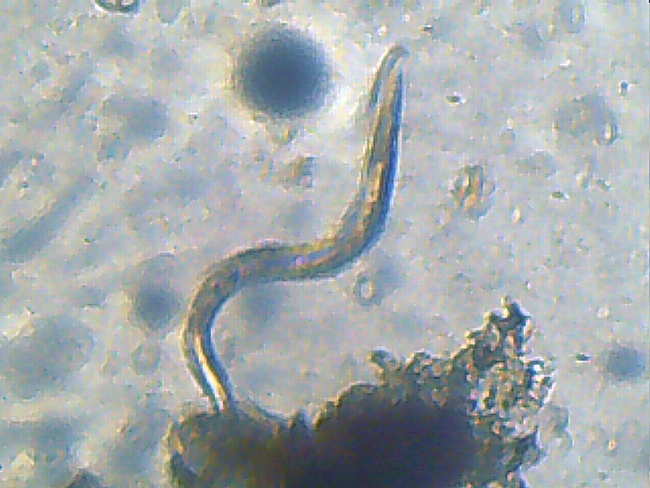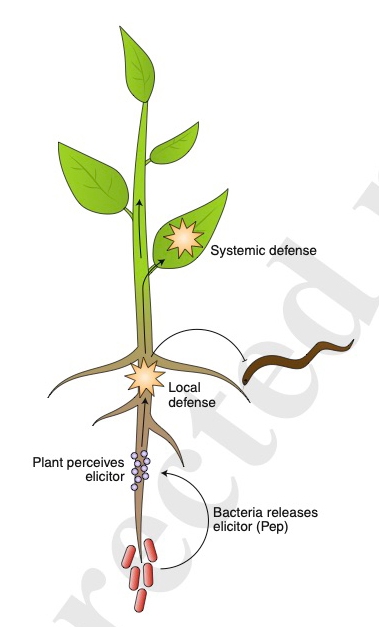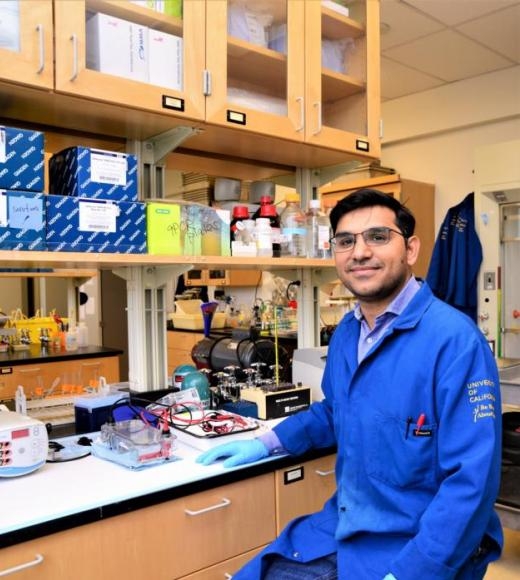- Author: Kathy Keatley Garvey

Her seminar, both in-person and virtual, begins at 4:10 p.m., Wednesday, Nov. 16 in 122 Briggs Hall. The Zoom link: https://ucdavis.zoom.us/j/95882849672.
Nematologist Shahid Siddique, assistant professor, UC Davis Department of Entomology and Nematology, is the host.
"Meloidogyne chitwoodi is a root-knot nematode often found in potato growing regions of Northwestern United States," Gleason says in her abstract. "It is a nematode that can infect both potato roots and tubers. In the case of tuber infections, it causes small pimple-like blemishes on the skin, giving the potato a rough, bumpy appearance. Unfortunately, there are no commercially available potato cultivars that are resistant to M. chitwoodi."
"The Gleason lab is undertaking several different lines of research to develop novel tools to combat these nematodes," she said. "For example, we characterize nematode effectors, which give us information about how the nematodes avoid or suppress the plant immune system. In addition, we are developing molecular markers to distinguish the different M. chitwoodi populations that differ in host range and virulence. On the plant side of the interaction, we are studying nematode resistance in potato, including resistance triggered by the potato defense elicitor called Pep1."
Gleason, who joined the WSU faculty in 2016, holds a doctorate in biochemistry and molecular biology from UC Davis (2003). She served as postdoctoral fellow, Disease and Stress Biology, John Innes Centre, Norwich UK (2003-2006), postdoctoral fellow, Plant Industry, CSIRO, Perth, Australia (2006-2010); and as junior professor in the Department of Plant Molecular Biology and Physiology, Georg-August-University Göttingen, Germany (2011-2016).
From her WSU website: "My research centers around plant parasitic nematodes and primarily focuses on root-knot nematodes and their interactions with host plants. These small roundworms are soil borne pathogens that can infect most vascular plants. The root infections cause damage that affects water and nutrient uptake, and this can lead to dramatically reduced crop yields. In order to develop new strategies to combat nematodes, my group studies root-knot nematode secretions that are released into the plant and manipulate host defenses and signaling pathways. One focus of study is on the root-knot nematode Meloidogyne chitwoodi, a serious pathogen of potatoes in the region. We are interested in identifying novel M. chitwoodi pathogenicity genes required for successful potato infection. We are also working to dissect the defense responses triggered during infection of nematode-resistant potatoes. My lab uses a variety of experimental approaches, such as gene expression analyses, generation and characterization of transgenic plants, and heterologous expression of nematode genes in bacteria, to increase our knowledge of the plant/nematode interaction at the molecular level."
Emily Meineke, assistant professor of urban landscape entomology, UC Davis Department of Entomology and Nematology, coordinates the department's seminars for the 2022-23 academic year. All 11 seminars will take place both person and virtually at 4:10 p.m. on Wednesdays in Room 122 of Briggs Hall except for the Nov. 9th and Dec. 7th seminars, which will be virtual only, she said. (See list of seminars)
For further information on the seminars or to resolve any technical difficulties with Zoom, contact Meineke at ekmeineke@ucdavis.edu.

- Author: Kathy Keatley Garvey

“Most current control methods rely on chemical nematicides, but their use is increasingly limited due to environmental concerns,” wrote Siddique and colleague Clarissa Hiltl of the University of Bonn, Germany, in a newly published News and Views column, “New Allies to Fight Worms,” in the scientific journal Nature Plants.
In commenting on Washington State University (WSU) research published in the same edition, they wrote that the proposed alternative pest management strategy--naturally occurring molecules or plant elicitor peptides (Peps)—shows promise: “Engineering a naturally occurring rhizobacterium to deliver Peps to the plant root system offers a new opportunity in integrated pest management.”
It's better to build up the host plant's immune system rather than directly target the pathogen with chemical nematicides which “are highly toxic and have negative effects on the ecosystem,” declared Siddique, an assistant professor in the UC Davis Department of Entomology and Nematology.
“Plant-parasitic nematodes are among the world's most destructive plant pathogens, causing estimated annual losses of $8 billion to U.S. growers and of nearly $78 billion worldwide,” he said.
The root-knot nematode Meloidogyne chitwoodi is a noted pest of potato production in the Pacific Northwest. Idaho leads the nation in commercial potato production, followed by Washington. Oregon ranks fourth. California, which ranks eighth, grows potatoes year around due to its unique geography and climate.
In their article, Siddique and Hiltl analyzed research published by WSU Department of Pathology scientists Lei Zhang and Cynthia Gleason who demonstrated the effective use of Peps to combat root-knot nematodes in potato (Solanum tuberosum). The WSU scientists engineered a bacteria, Bacillus subtillis, to secrete the plant-defense elicitor peptide StPep1. Pre-treatment of potato roots “substantially reduced root galling, indicating that a bacterial secretion of a plant elicitor is an effective strategy for plant protection,” the Zhang-Gleason team wrote. (See article.)
Earlier scientists discovered that Peps could effectively manage nematodes in soybeans. Unlike the seed-grown soybeans, however, potatoes grow from small cubes of potatoes known as seed potatoes.
“Besides chemical nematicides, methods of nematode management include the use of crop rotation, microbial biocontrol agents, cover crops, trap crops, soil solarization, fumigation and resistant plant varieties,” wrote Siddique and Hiltl. “However, several of these strategies are not effective or available for all crops. Nematicides are highly toxic, and their use is strictly limited due to environmental concerns. Resistant plants are often ineffective or unavailable. Microbial biocontrol agents have produced inconsistent results. In this context, the current work provides a new opportunity to manage plant-parasitic nematodes by combining two progressive strategies: the use of plant elicitors to enhance crop resistance to pathogens and the use of B. subtilis to deliver.”



